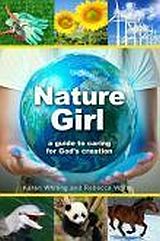© 2015 Karen Whiting
Books that engage kids can spread like wildfire and get other kids reading. I recall when my son was in grades 3 and 4. He discovered he liked books by Bill Myers and The Redwall series by Brian  Jacques. My son started his own book club engaging friends who never read.
Jacques. My son started his own book club engaging friends who never read.
Before attempting to write for this age group, it’s important to understand the differences and similarities in writing chapter books (ages 7-9) and middle grade readers (ages 8-12).
Differences
- The chapter book is 4-10k words, has short chapters and larger print, and contains some black and white illustrations.
- The middle reader is about 12K words (middle novel is 40-60K words). The book contains no illustrations, uses longer chapters and less white space, and the protagonists are generally 11-12 years old (top of the age level). The content appeals to older kids. They are thinking deeper and looking wider, learning how the world influences their beliefs and choices.
- The chapter book needs appropriate vocabulary (they can sound out words) and a simpler plot. Each chapter is more like an episode. For the younger reader, some can even have talking animals. These books help young readers focus on their identity, friends, and family.
- The middle grade reader has more complicated plots and includes subplots. Each of a number of main characters may have a conflict.
Similarities
Any book written for tweens needs:
- Authentic characters
- Great hook
- Cliffhanger at the end of each chapter
- Hints and clues that reveal the past and show possibilities of the future
- Dialogue true to characters
- Humor, especially for boys
- Tight writing
- Writing that is never preachy
Must Haves
No matter which tween audience you want to reach, be sure to include the following to keep your reader engaged:
- Main character traits that kids can figure out
- Relatable qualities (shared problems, hobbies, etc)
- Clues kids can use to predict what might happen
- Action with setting, location points of interest, and tone woven in
- Strong protagonist
- Simple chronology
- Strong verbs and good adjectives
- Similes, metaphors, and other figures of speech if they fit naturally
Write captivating fiction while keeping your particular age group in mind, and you’ll produce books that will inspire young readers to start their own book clubs.
____________________
Karen Whiting writes for children, families, and women. She’s the author of eighteen books and more than six hundred articles. Her book The One Year My Princess Devotions won the 2014 Christian Retailing Best Award in children’s nonfiction. As a former television host of Puppets on Parade and past writer for Focus on the Family’s parenting magazines, she loves to let creativity and fun spill into her talks and writing. She is a widow, the mother of five, including two rocket scientists (yes, for real), and a grandmother. 

